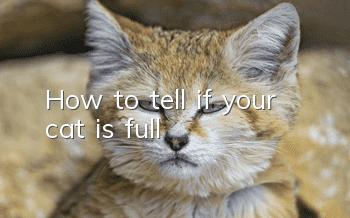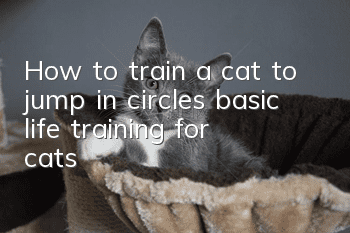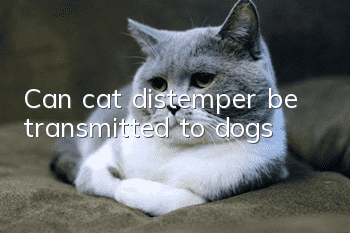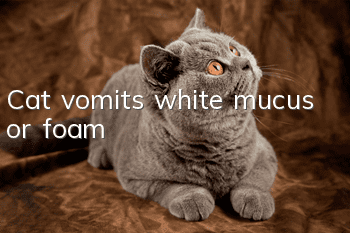How to tell if your cat is full?

The cat looks very hungry. At this time, you can't bear it and prepare some food for the cat. But you notice that over the next few hours, the cat doesn't eat. Many shit shovelers have encountered this scene.
Animal behaviorist John Bradshaw and others discovered in observation experiments that cats sometimes "beg" for food from the scavenger not because they are hungry. But enough food can make cats feel happy.
Furthermore, cats have a "long-term vision" and will still "plan" in advance for their next meal even when they are full.
If your cat exhibits the following 2 behaviors, you should be cautious. Because these behaviors do not mean that the cat is really hungry. At this time, you should observe the cat for a while instead of preparing food for the cat immediately.
1. The cat stares at the place where the food is stored, or stays here for a long time and refuses to leave.
A cat that has just arrived at your home is more likely to do this. These cats are unsure whether they will get their next meal. The cat has not yet fully established trust in the scavenger, so the cat will often stay near the food.
If you make your cat understand that you will not starve her, most cats will stop doing this after a week. If you raise your cat in a way where food is always available in the cat's food bowl, your cat will change this habit more quickly.
2. When you eat, your cat is very interested in your food and tries to eat it.
Once the cat can’t eat it, or you don’t let the cat have access to the food. You will see that the cat is obviously unhappy. But you should not give the cat "extra food" immediately because of this, because the cat is probably not hungry at this time.
When you are eating, the purpose of the cat coming over is actually to "see if you can get food by accident." Most cats come here with the mentality of giving it a try.
This is related to the evolutionary process of cats. Compared with other animals, cats attach great importance to the role of "opportunity" in the process of hunting (some animals attach great importance to the storage of food, and other animals attach great importance to the ease of food). Dedu). In order to increase the success rate of hunting, cats pay great attention to food-related information.
Rather than saying that the cat wants to eat your food, it is better to say that the cat actually wants to collect information about the food.
If you want to know exactly whether your cat is full, you can observe 3 behaviors of cats.
1. Cats will spend a long time cleaning their fur after eating. If a cat spends a long time grooming within 35 minutes after eating, it means the cat is full.
Feline researchers have found that grooming after a full meal can help cats digest food better.
In the wild, because there are many other animals that are easy to "compete with cats for food", cats will eat faster, and grooming after eating can also relieve cats' tension during the "hunting-eating" process.
If the cat is not full, the cat will not enter the "long grooming" stage. When there are many cats in the home, these cats often gather together to groom each other after they are full.
2. Cats that are full will leave the food area: a circle of about 2.5 meters around the food, while cats that are not full will still wander in this area.
Even cats who eat several times will not stay away from food until they are full. Moreover, when cats are not full, they will often walk near the food to observe to prevent the food from being eaten by other animals or moved by people.
Cats in the wild will try their best to finish the food in one sitting, while free-range cats sometimes take uneaten food home.
3. After cats are full, they prefer to rest in a sunny place, or to rest lazily for a long time.
The characteristics of cats’ gastrointestinal tract prevent cats from maintaining good digestive ability during exercise. After cats are full, they need to be still to fully digest.
So, you will see that the cat is unwilling to exercise after eating, and the cat looks obviously tired.
When you see your cat eating, choose a quiet place and start grooming or resting. And at this time, the cat is far away from the food.
It can basically be confirmed that the cat is full at this time. If the cat pretends to be "hungry" again, it often has a greater relationship with the cat's mood and psychology.
It should be noted that the process of eating a house cat full is often not a one-time meal. Some cats will eat a portion of food divided into 5 to 8 times.
If your cat can eat cat food at any time, then the "cat is full" behavior will be less obvious.
Cats who can eat cat food at any time will be much less focused and excited about food. Moreover, the amount of food the cat eats each time will be smaller, and the total number of meals per day will slightly increase.
Mastering the method of "judging when a cat is full" will allow you to provide food to your cat more scientifically.
When you confirm that the cat is full, do not provide more food to the cat. A higher proportion of domestic cats have overnutrition.
- What to do if bitten by a cat? How to train a cat not to bite?
- What are the habits of Ragdoll cats?
- Is it good for cats to eat only cat food? How much impact will it have on the cat’s health?
- How to get a kitten to get close to you
- What should be done to improve the condition of Ragdoll cats? I’ll teach you a few methods!
- Do all cats like to have their chin scratched?
- What are the tips for grooming Siamese cats?
- Can cats eat honey?
- What is the difference between American Shorthair and British Shorthair? How to tell the difference between a British Shorthair cat and an American Shorthair cat?
- How to teach cats good toileting habits



